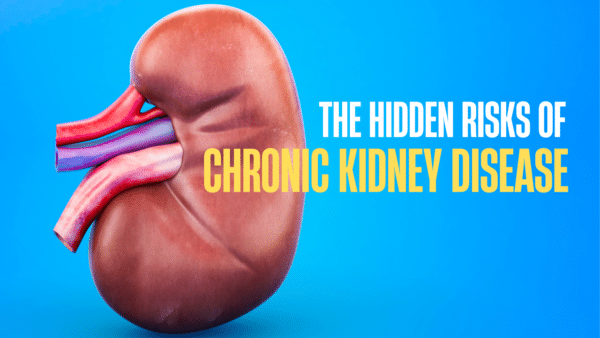Introduction: Why Candy Matters for Your Health
Halloween is a time for thrills, costumes, and—perhaps most notoriously—candy. While trick-or-treating is a fun tradition, it also brings a staggering amount of sugar into homes, tempting even the most health-conscious. For people managing their health, especially those keeping an eye on their blood sugar levels, Halloween candy can be more than a festive indulgence—it can be a serious health hazard.
Each year, the sheer volume of candy consumed during Halloween raises concerns about the long-term effects on our bodies, particularly on blood sugar and overall health. As candy consumption skyrockets, it’s crucial to understand how these sweet treats impact blood glucose levels and contribute to conditions like obesity and diabetes. In this article, we’ll delve into the science behind the most unhealthy Halloween candies, explore their effects on blood sugar, and provide insights on how to make better choices this spooky season.
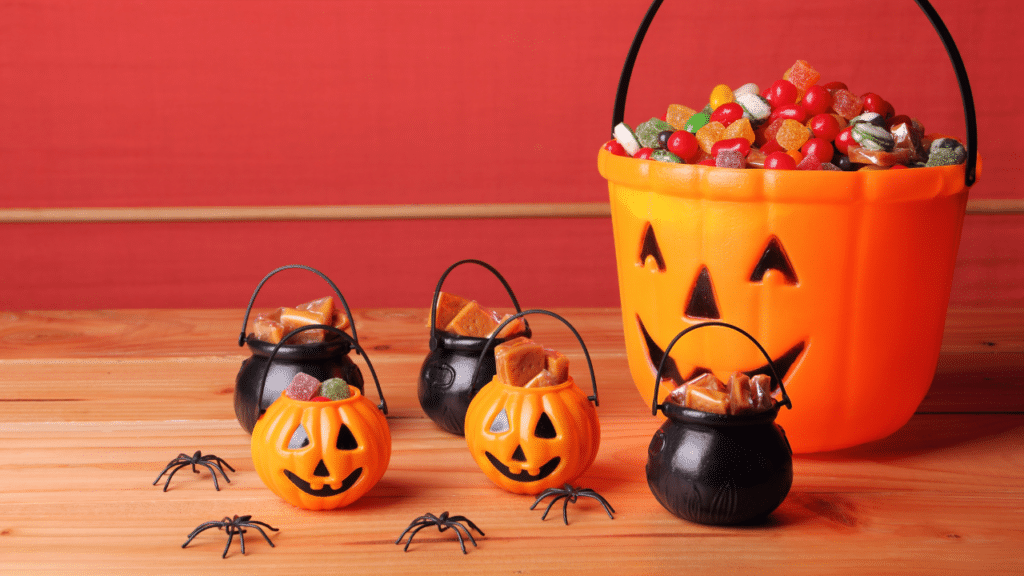
Understanding Candy and Health: The Impact on Blood Sugar
Candy may seem like an innocent treat, but the way it affects your body, especially your blood sugar, can be anything but harmless. When you eat candy, particularly sugary, high-carbohydrate varieties, your body breaks it down into glucose, which enters your bloodstream. This can cause your blood sugar levels to rise rapidly. For healthy individuals, this may lead to a short-term sugar “rush,” but for people with conditions like diabetes, it can have more serious consequences.
The glycemic index (GI) is a useful tool for understanding how different types of food affect blood sugar. The GI ranks foods on a scale from 0 to 100 based on how quickly they raise blood glucose levels. Candy, especially the processed and sugary kind, typically ranks high on this scale, causing sharp spikes in blood sugar. When your blood sugar spikes quickly, your pancreas works overtime to produce insulin, the hormone that helps lower blood sugar by moving it into cells where it’s used for energy. However, repeated spikes can wear out your insulin response, increasing your risk of developing insulin resistance, Type 2 diabetes, and other metabolic conditions.
For those already managing diabetes or pre-diabetes, these blood sugar fluctuations can be dangerous. High blood sugar, or hyperglycemia, can lead to symptoms such as fatigue, increased thirst, and frequent urination. Over time, if blood sugar is not well-controlled, it can result in more severe complications like nerve damage, cardiovascular disease, and kidney problems.
While all candy is a culprit when it comes to sugar spikes, some varieties are worse than others due to their sugar content, fat, and additional additives. To protect your health, it’s essential to understand which candies pose the highest risk to your blood sugar—and why they should be avoided or consumed in strict moderation during Halloween and beyond.

Worst Offenders: What Makes a Candy Unhealthy?
When it comes to Halloween candy, not all treats are created equal. Some types are significantly more harmful to your health than others, particularly when it comes to their sugar, fat, and ingredient content. So, what makes certain candies stand out as the worst offenders? Let’s break down the factors that contribute to a candy’s unhealthy profile and why these treats can be especially bad for your blood sugar and overall well-being.
One of the main culprits is high sugar content. Most Halloween candies are packed with refined sugars, which not only contribute to blood sugar spikes but can also lead to long-term health issues like obesity, diabetes, and heart disease. The body absorbs refined sugars quickly, causing glucose levels to skyrocket. This forces your pancreas to produce more insulin to manage the sugar overload. For those at risk of or already dealing with insulin resistance, this process exacerbates the problem, pushing them closer to full-blown Type 2 diabetes.
Another major issue is the presence of high fructose corn syrup (HFCS), a common sweetener in many candies. HFCS is cheaper than regular sugar, making it a popular ingredient in mass-produced sweets, but it has been linked to increased fat accumulation, liver damage, and insulin resistance. When consumed regularly, HFCS contributes to weight gain and metabolic disorders, making it a significant factor in the unhealthiness of many Halloween favorites.
Next up are trans fats, often found in candies that contain peanut butter, caramel, or chocolate. Trans fats are artificial fats created during food processing to extend shelf life, and they have been shown to raise bad cholesterol (LDL) while lowering good cholesterol (HDL). This combination increases the risk of heart disease, inflammation, and insulin resistance—conditions that are already exacerbated by high sugar intake.
Beyond sugar and fats, many Halloween candies are loaded with artificial colors, preservatives, and additives. Brightly colored sweets like gummies and candy corn often contain synthetic dyes, such as Red 40 and Yellow 5, which have been linked to hyperactivity in children and potential carcinogenic effects. While the exact health risks of these additives are still debated, they add to the list of reasons why certain candies are best avoided.
Finally, the portion size of these candies is deceptively small. Many Halloween treats are “fun-sized,” but these small portions can be misleading. It’s easy to consume several at once, leading to a much higher intake of sugar, fats, and additives than intended. What seems like a harmless handful of candy can quickly turn into a sugar overload, with each small piece contributing to a significant spike in blood glucose.
To sum it up, the unhealthiest Halloween candies are those that combine high levels of sugar, artificial sweeteners like high fructose corn syrup, unhealthy fats, and synthetic additives. The combination of these ingredients leads to rapid blood sugar increases and long-term health risks, making them some of the worst choices for your health during the Halloween season.
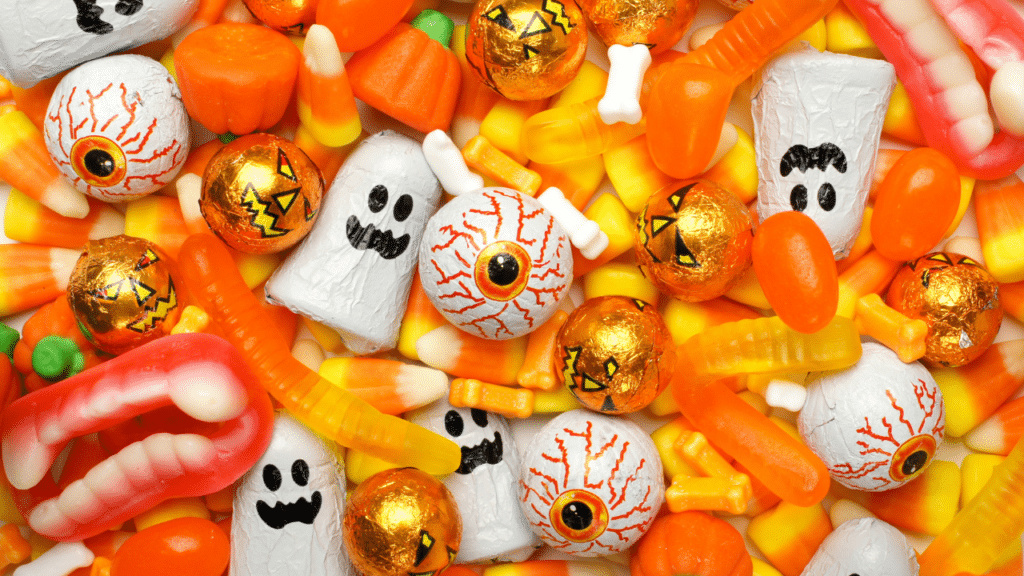
Spotlight on the Most Unhealthy Halloween Candies
Now that we’ve covered what makes certain candies more harmful, it’s time to highlight the worst offenders in your Halloween stash. These candies not only pack a sugar punch but also contain unhealthy fats, artificial additives, and sky-high calories that can wreak havoc on your blood sugar and overall health. Let’s break down some of the most popular Halloween treats that you should think twice about before indulging.
- Reese’s Peanut Butter Cups
Peanut butter and chocolate might seem like a tasty, protein-packed snack, but Reese’s Peanut Butter Cups are far from healthy. A single “fun-sized” Reese’s cup has 8 grams of sugar, 4.5 grams of fat, and around 90 calories. While the peanut butter provides some protein, the high fat and sugar content lead to rapid blood sugar spikes. Additionally, Reese’s contains trans fats, which increase the risk of heart disease and negatively impact cholesterol levels. - Snickers
With its layers of nougat, caramel, and peanuts, Snickers is a Halloween favorite. However, a typical “fun-sized” Snickers contains around 10 grams of sugar and 80 calories—and that’s just in a single small bar. The high sugar content combined with fat from the caramel and peanut butter makes it a nightmare for anyone managing their blood glucose. Not to mention, Snickers is also packed with unhealthy fats that contribute to weight gain and insulin resistance. - Candy Corn
No Halloween is complete without candy corn, but this colorful treat is one of the worst for your health. Candy corn is essentially pure sugar—made from high fructose corn syrup, artificial colors, and preservatives. Just 19 pieces of candy corn deliver 28 grams of sugar, which can cause a serious spike in blood glucose levels. Because it contains virtually no nutrients, candy corn offers empty calories and a fast track to hyperglycemia. - Skittles
Skittles are known for their “taste the rainbow” slogan, but these colorful candies are loaded with artificial dyes like Red 40 and Yellow 5, along with a hefty dose of sugar. A “fun-sized” pack of Skittles has 11 grams of sugar—all of which comes from refined sources, leading to a rapid spike in blood sugar levels. In addition to sugar, the artificial colors and flavors in Skittles are linked to potential health risks, including hyperactivity in children and possibly carcinogenic effects in the long term. - Twix
Another popular chocolate bar, Twix, is deceptively dangerous due to its combination of sugar, chocolate, and cookie-like base. A “fun-sized” Twix has 8 grams of sugar, 4 grams of fat, and 80 calories. The combination of sugar and fat leads to quick blood sugar spikes, especially when consumed in multiples, which is easy to do with these bite-sized bars. - Butterfinger
Butterfingers might be crunchy and satisfying, but their ingredient list is less than ideal. A small “fun-sized” bar has 8 grams of sugar and 85 calories. Its sticky texture is not only hard on your teeth but also indicative of high fructose corn syrup content. This sweetener, combined with the saturated fat from the chocolate coating, makes Butterfinger a poor choice for anyone monitoring their blood sugar. - M&Ms (Peanut and Regular)
M&Ms, especially the peanut variety, are another crowd-pleaser that packs a punch of sugar and unhealthy fats. A “fun-sized” bag of regular M&Ms has 10 grams of sugar, while the peanut version contains 9 grams of sugar along with added fats from the peanuts. These candies are also colored with artificial dyes, which have been associated with various health concerns, from hyperactivity to potential carcinogenic effects.
Each of these candies delivers more than just a sweet treat—they can lead to rapid increases in blood glucose, unhealthy fat consumption, and the intake of artificial ingredients that harm your overall health. For people who already struggle with blood sugar control, these candies pose an even greater risk. Monitoring your intake of these Halloween favorites is crucial if you want to avoid sugar spikes and protect your long-term health.
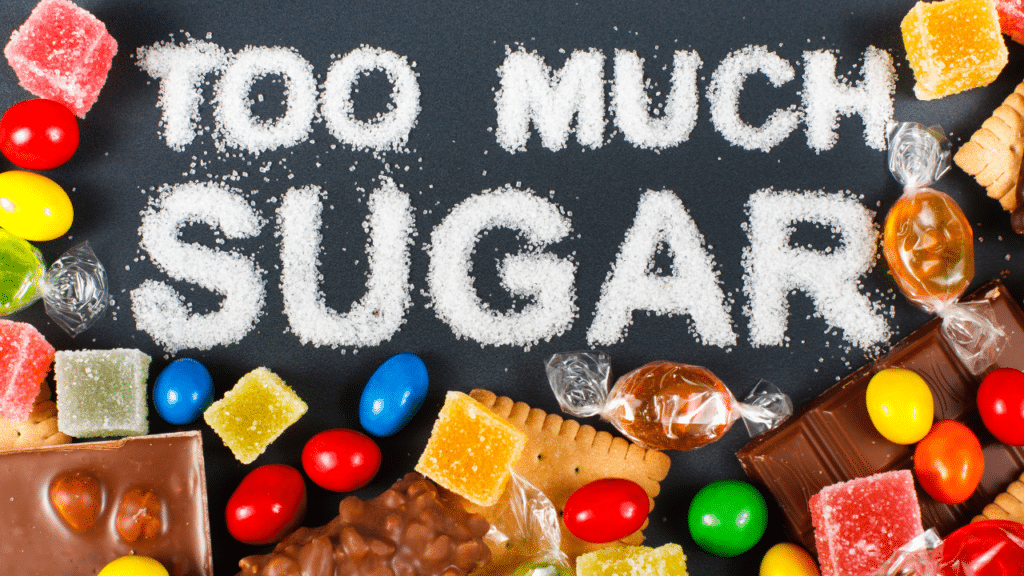
Blood Testing: Why It’s Important to Monitor Your Blood Sugar
While it’s easy to get caught up in the fun of Halloween, for individuals managing their health—especially those with diabetes or at risk for high blood sugar—candy consumption can have more serious implications. This is where blood testing becomes a crucial tool in understanding how your body responds to those sweet treats. Monitoring blood glucose levels can help you stay ahead of potential complications and allow you to enjoy the season without risking your health.
The Importance of Blood Glucose Monitoring
For people with diabetes, regular blood sugar testing is essential to managing the disease. Blood glucose levels can fluctuate rapidly after consuming foods high in sugar and carbohydrates—like Halloween candy—leading to dangerous conditions such as hyperglycemia (high blood sugar). If left unchecked, hyperglycemia can cause both short-term symptoms (like fatigue, blurred vision, and frequent urination) and long-term damage (such as nerve damage, cardiovascular issues, and kidney disease).
Using a glucose meter to test blood sugar levels after indulging in candy allows individuals to see how their body is reacting. Monitoring helps identify whether insulin levels are sufficient to manage the glucose spike or whether interventions, such as insulin administration or adjustments to dietary intake, are necessary. For people without diabetes, keeping an eye on blood sugar can provide valuable insights into how high-sugar diets might be pushing them toward insulin resistance or prediabetes.
How Candy Impacts Blood Sugar Levels
Halloween candies, particularly those high in refined sugars like high fructose corn syrup, cause rapid increases in blood sugar. After consuming sugar-laden treats, the digestive system quickly converts the carbohydrates into glucose, which enters the bloodstream. For those with functioning insulin responses, this triggers the pancreas to release insulin, which helps cells absorb glucose for energy. However, when large amounts of candy are consumed, the body can struggle to keep up with the demand for insulin, especially in individuals with insulin resistance or diabetes.
This process can lead to a dangerous cycle: a rapid rise in blood sugar followed by a sudden crash, leaving you feeling fatigued, irritable, or lightheaded. In some cases, repeated high sugar intake can overwhelm the body’s insulin production, leading to long-term insulin resistance—a precursor to Type 2 diabetes.
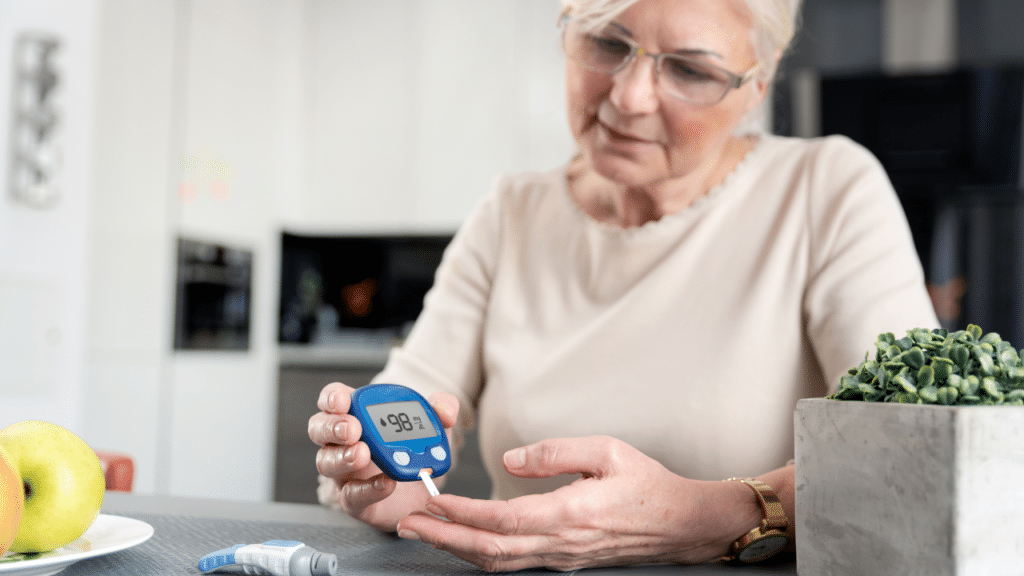
Practical Tips for Blood Sugar Testing During Halloween
For those managing blood sugar levels, keeping a blood glucose meter on hand during Halloween can be an invaluable strategy. Testing before and after consuming candy provides insight into how your body responds to different types of sweets. Here are a few practical tips to manage blood sugar spikes during Halloween:
- Test Before and After Eating Candy: Measure your blood sugar levels before indulging in Halloween treats and then test again about 1-2 hours after eating. This will show how your body is handling the sugar intake and whether it’s within a safe range.
- Choose Lower-GI Candies: Opt for candies with a lower glycemic index (GI), such as dark chocolate, which can cause less dramatic blood sugar spikes compared to high-GI options like candy corn or gummy bears.
- Limit Portions: Consuming candy in small portions allows your body to manage sugar intake more effectively. Instead of several pieces at once, try one and monitor your blood sugar levels.
- Hydrate and Eat Balanced Meals: Drinking plenty of water and eating balanced meals with fiber, protein, and healthy fats before indulging in candy can slow the absorption of sugar and prevent extreme glucose spikes.
Blood testing provides valuable real-time feedback, empowering you to make informed choices about how much candy you can safely enjoy. It also serves as a safeguard, ensuring that sugar consumption doesn’t lead to dangerous spikes in blood glucose.
You can also get a blood glucose test without a doctor’s note here.
Healthier Alternatives: Satisfy Your Sweet Tooth Without the Guilt
If you’re looking for ways to enjoy Halloween without the guilt—and without wreaking havoc on your blood sugar—there are plenty of healthier alternatives to traditional candy. These alternatives can satisfy your cravings without causing the extreme sugar spikes that come with conventional sweets. Here are a few options to consider:
1. Dark Chocolate
Unlike milk chocolate, dark chocolate contains less sugar and more antioxidants, making it a better choice for those trying to manage their blood sugar. Studies suggest that dark chocolate may even improve insulin sensitivity. Opt for varieties with at least 70% cacao for the most health benefits and the least sugar. Dark chocolate can also be richer in flavor, allowing you to indulge with smaller portions.
2. Low-Sugar or Sugar-Free Candy
Many companies offer low-sugar or sugar-free candy options that are designed for people concerned about their blood sugar levels. These treats use sugar substitutes like stevia, erythritol, or monk fruit to provide sweetness without the glucose spike. However, it’s important to note that while these alternatives may not raise blood sugar as much as regular candy, they can still cause digestive issues in some people if consumed in excess.
3. Fruit-Based Snacks
If you’re craving something sweet but want to avoid processed sugar, fruit-based snacks can be a great alternative. Dried fruit like raisins or apple chips are naturally sweet and rich in fiber, which helps moderate blood sugar spikes. You can also opt for homemade fruit leather or baked fruit crisps to satisfy your sweet tooth. While dried fruit does contain natural sugars, its fiber content makes it a better option than refined sugary candies.
4. Dark Chocolate-Covered Nuts
Combining the health benefits of nuts and dark chocolate, this snack is a protein-packed, lower-sugar alternative to traditional candy bars. Nuts provide healthy fats and protein, which help slow the absorption of sugar into the bloodstream, preventing the rapid blood sugar spikes typical of most Halloween treats. Look for varieties with minimal added sugar or consider making your own at home with roasted almonds or peanuts dipped in melted dark chocolate.
5. DIY Healthier Treats
Another option is to make your own healthier Halloween treats. You can control the ingredients and sugar content by making homemade snacks like energy balls, made with oats, peanut butter, and a touch of honey. These treats provide natural sweetness, fiber, and healthy fats, which keep your blood sugar more stable compared to processed candies. Other ideas include homemade trail mix with dark chocolate chunks or Greek yogurt-covered fruit.
Making Mindful Choices
Beyond choosing healthier alternatives, another key to reducing Halloween’s impact on your health is mindful eating. By practicing portion control and savoring each bite, you can enjoy your favorite treats without overindulging. Healthier snacks are an excellent option, but even with these alternatives, moderation is still important to protect your blood sugar and overall health.
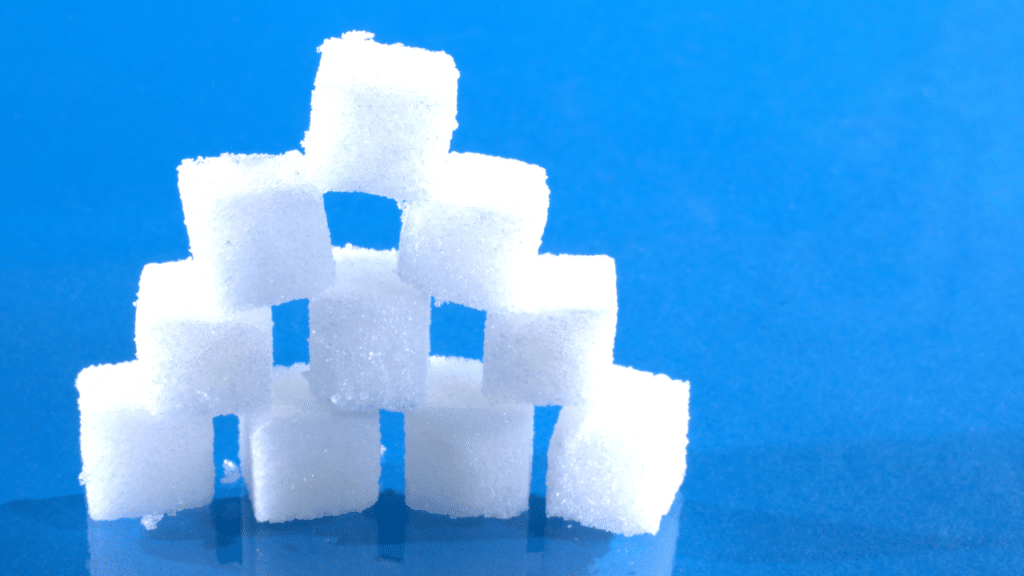
Conclusion: Finding Balance This Halloween
Halloween doesn’t have to be a sugar-laden nightmare for your health. By understanding which candies are the most harmful and how they impact blood sugar, you can make more informed choices that protect your well-being. The key is balance—enjoying the festive spirit of Halloween without overindulging in treats that can lead to dangerous blood sugar spikes and long-term health complications.
Monitoring your blood sugar through regular testing, opting for healthier candy alternatives, and practicing mindful eating can help you navigate Halloween in a way that’s both enjoyable and safe. Remember, it’s not about cutting out candy altogether but about making smarter choices that support your health goals.
As Halloween approaches, arm yourself with knowledge, plan ahead, and savor the fun of the holiday while keeping your health in check. A little moderation goes a long way toward ensuring that you can enjoy Halloween treats without sacrificing your long-term wellness.

